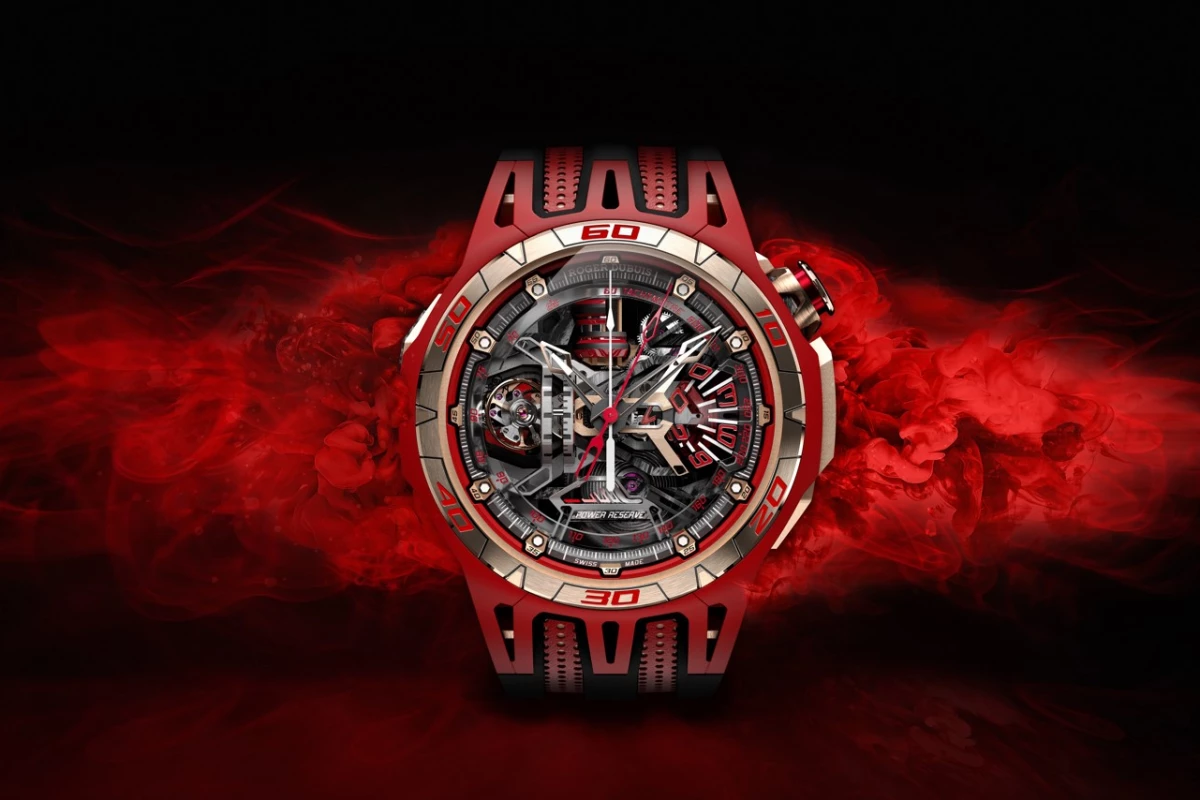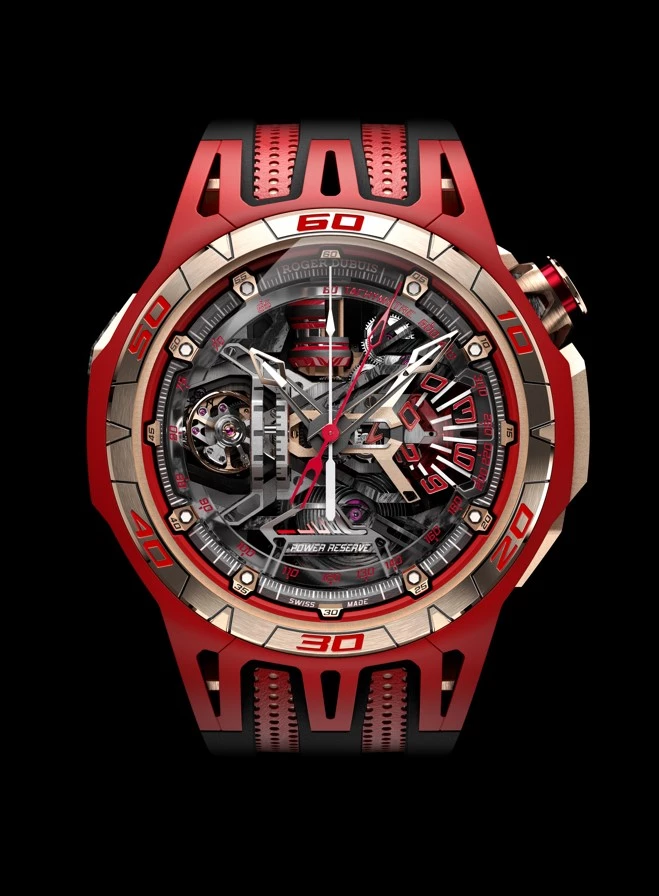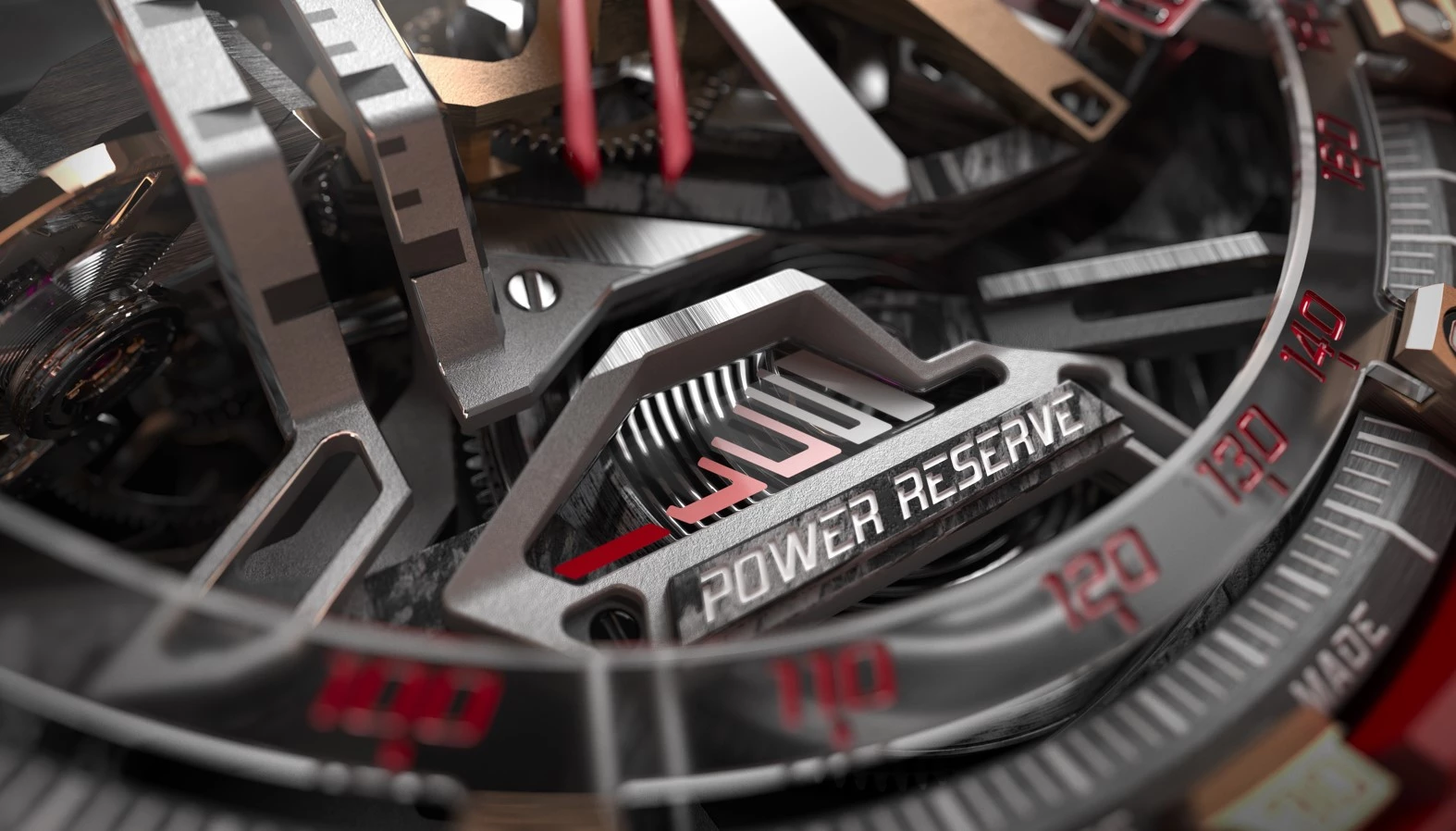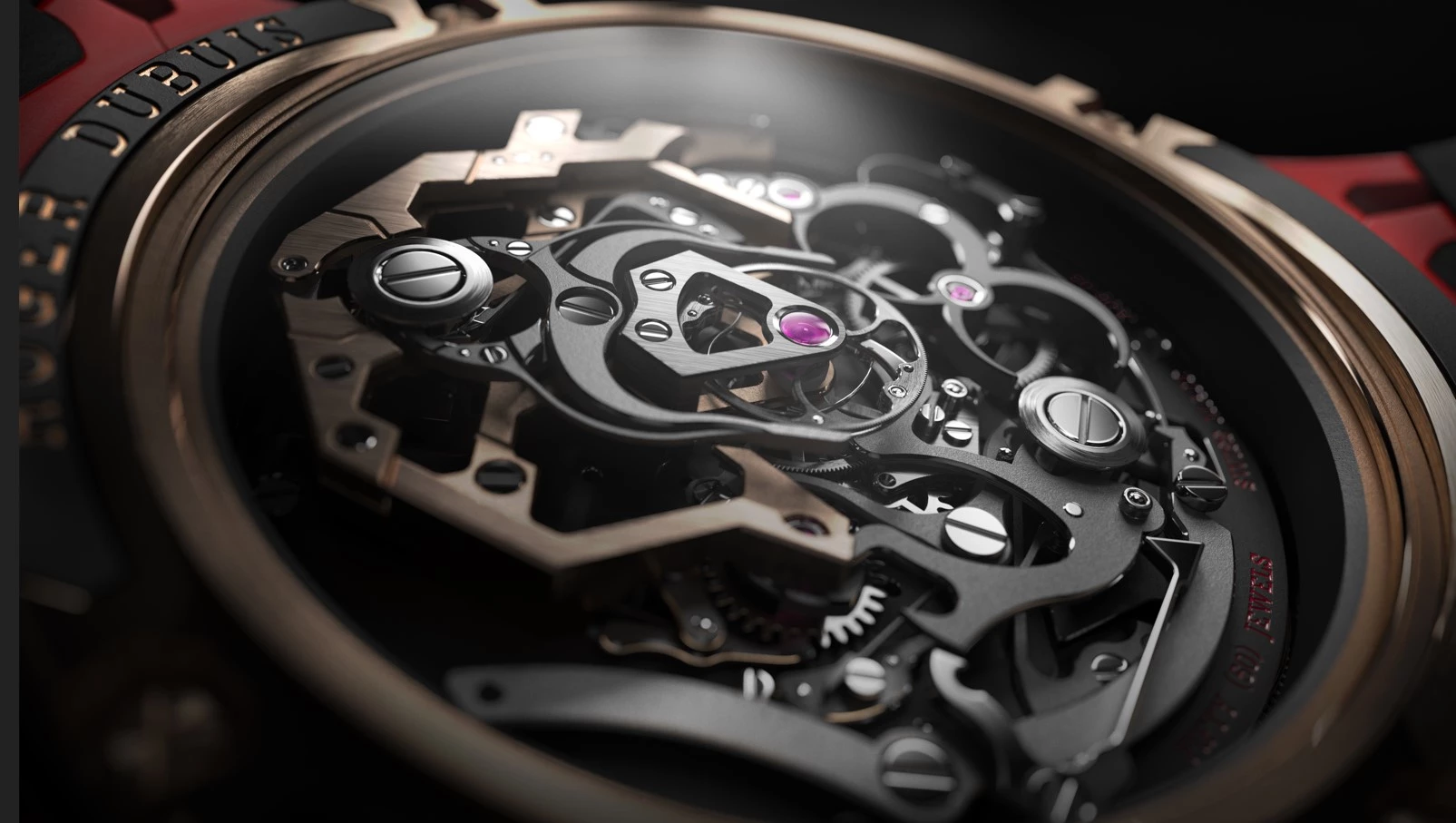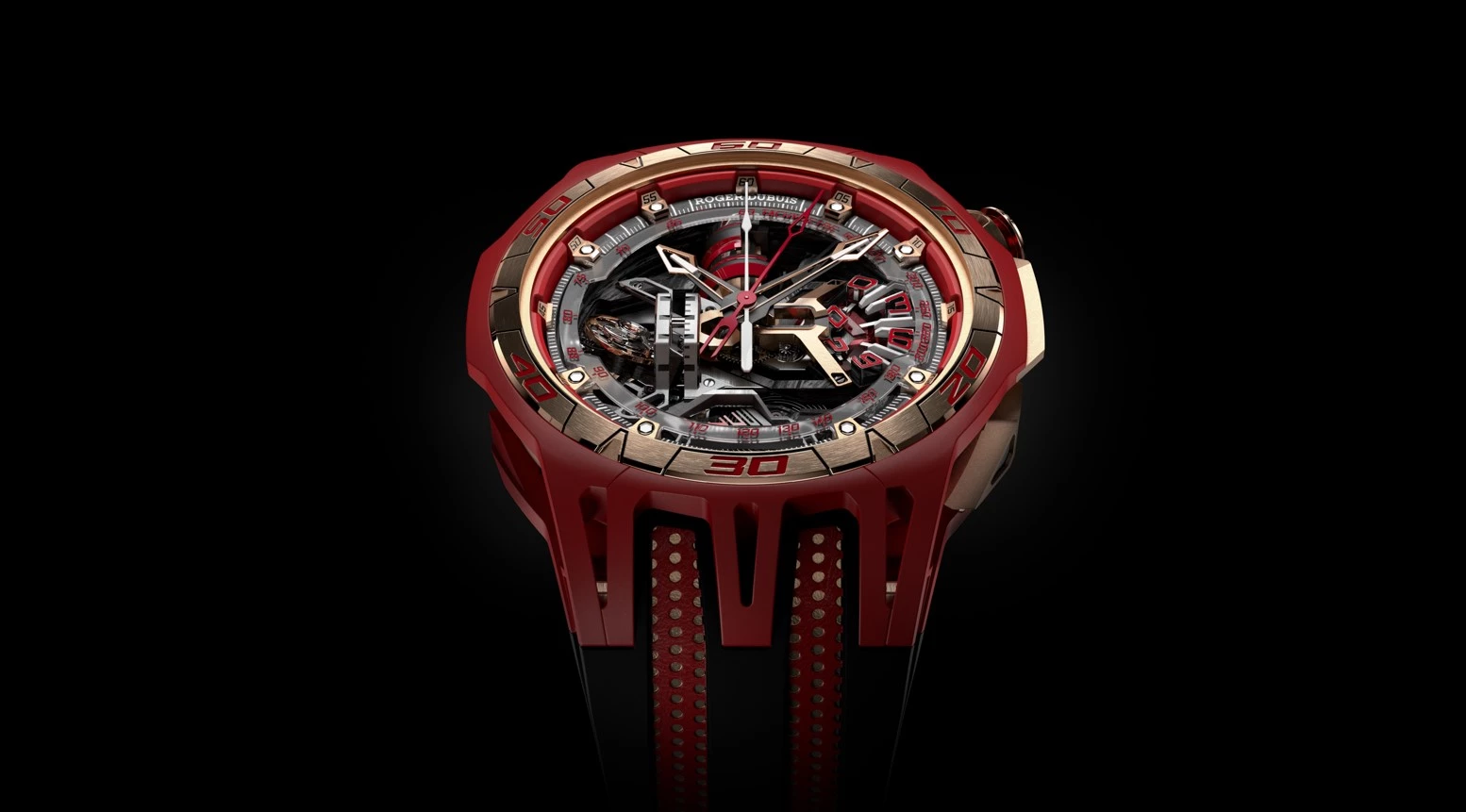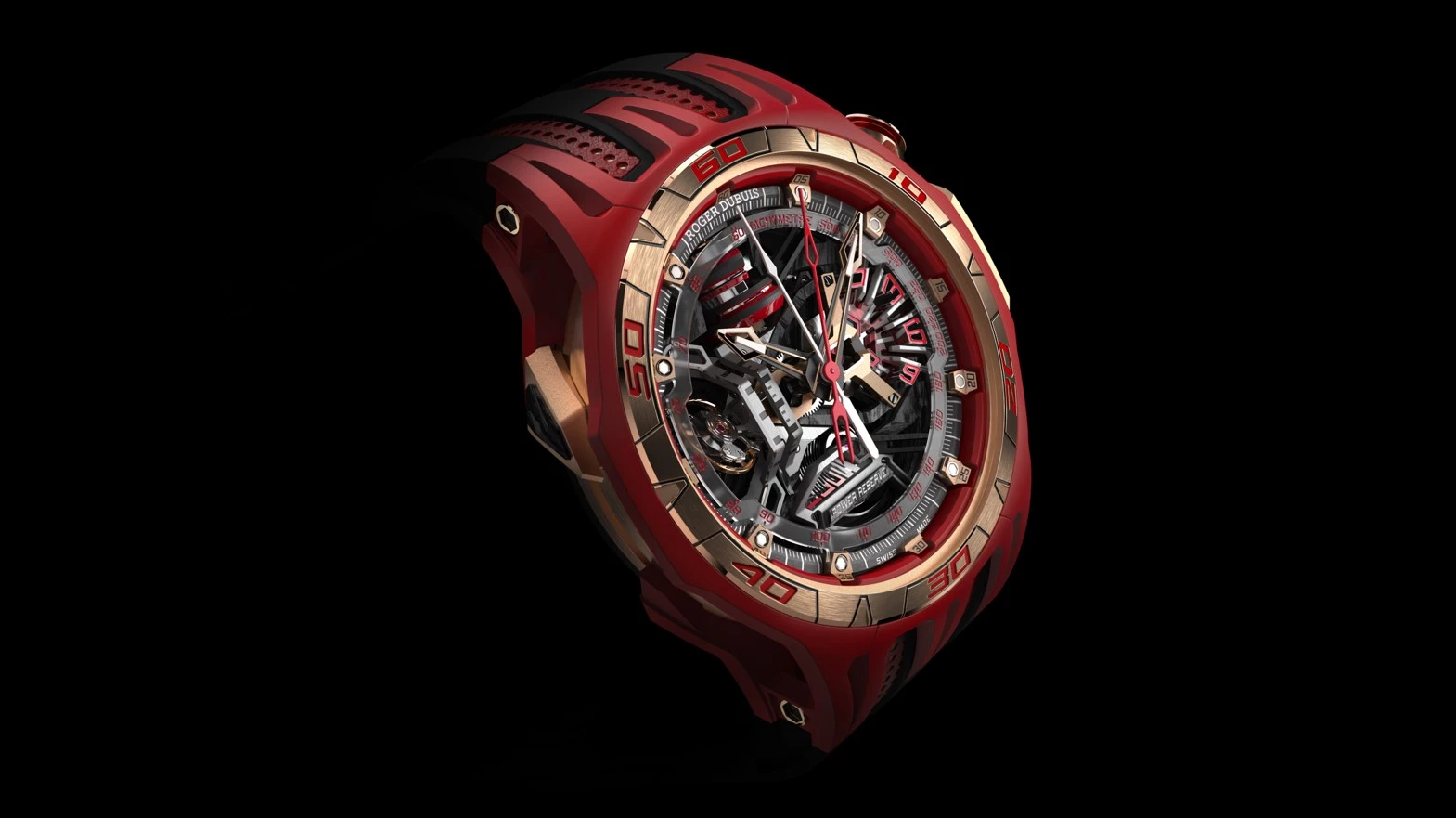At Watches & Wonders Geneva 2023, Swiss watch manufacturer Roger Dubuis has unveiled its concept wrist timepiece called the Monovortex Split-Seconds Chronograph that introduces three new complications to the world of haute horlogerie.
The high-end luxury market for wristwatches has changed a lot since the 1980s when the infamous Quartz Crisis threatened to make mechanical watches and the Swiss watch industry a thing of the past. Today, luxury watches are a US$50-billion-plus market and watch companies have become innovation powerhouses that regularly produce new watches that push the envelope of what mechanical movements can accomplish.
Roger Duibis' one-off Monovortex Split-Seconds Chronograph is one example that its makers are so proud of that it's the only watch they've decided to exhibit at Geneva this year.
Set in a 47-mm mineral composite fiber (MCF) case that is claimed to be 2.5 times lighter than ceramic and 13% lighter than carbon composite, the Monovortex is striking from the first glance with its fiery red and pink gold livery that the company says took years to develop.
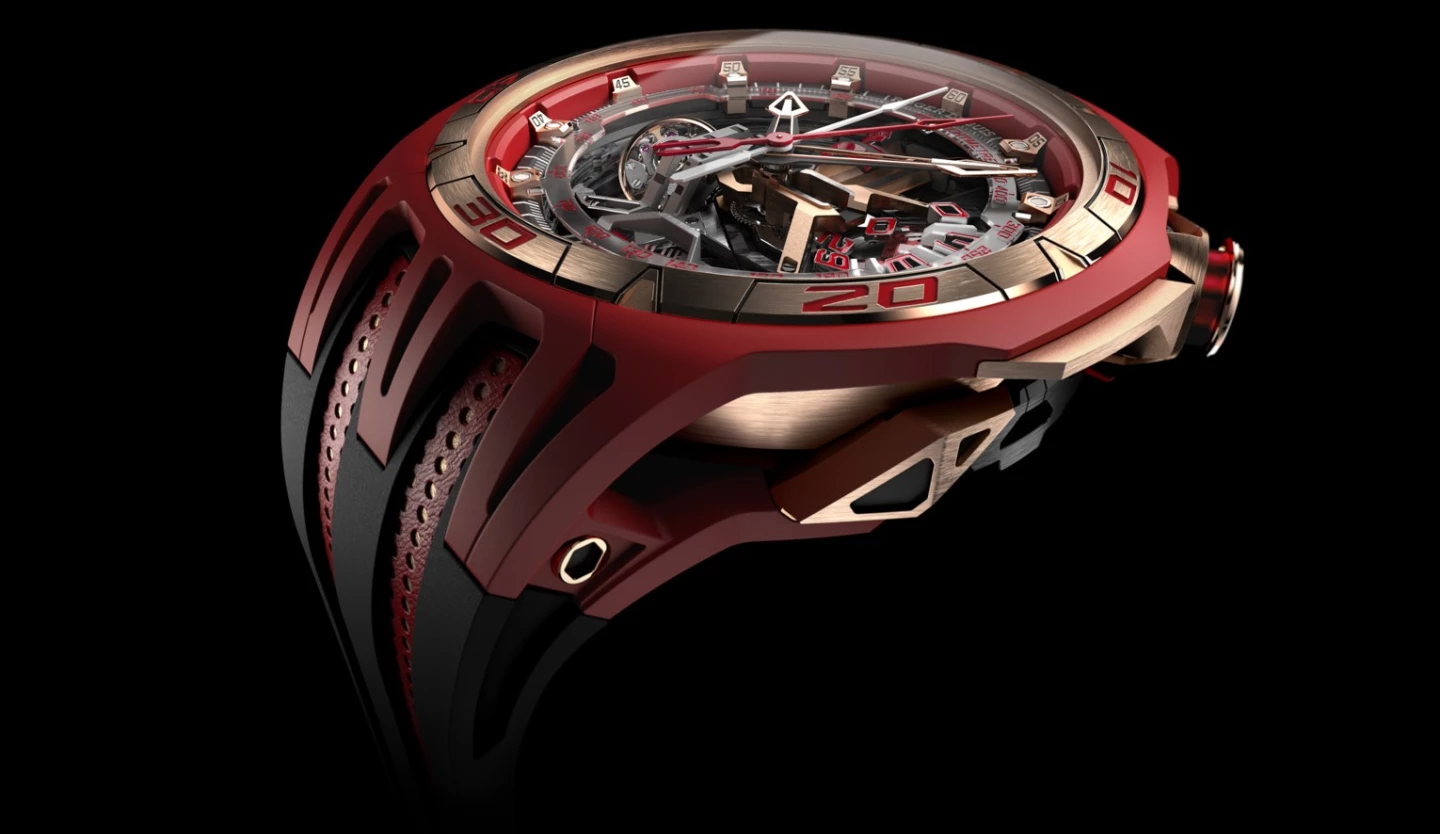
However, the stand out features of the Monovortex are the new complications that it introduces.
One of these is its tourbillon. The concept itself isn't new. Tourbillons have been around since 1801 and by placing the escapement and balance wheel inside a rotating cage a watch could be protected from the force of gravity affecting the movement as the watch was turned at different angles to the ground. There have been a number of variations on this idea and for the Monovortex Roger Dubuis developed a new one the company says "controls the forces of gravity." That may be slight marketing hyperbole but instead of turning in one axis, the Conical Monovortex Tourbillon turns in 360 degrees, so no matter which way the watch is turned, its precision is maintained.
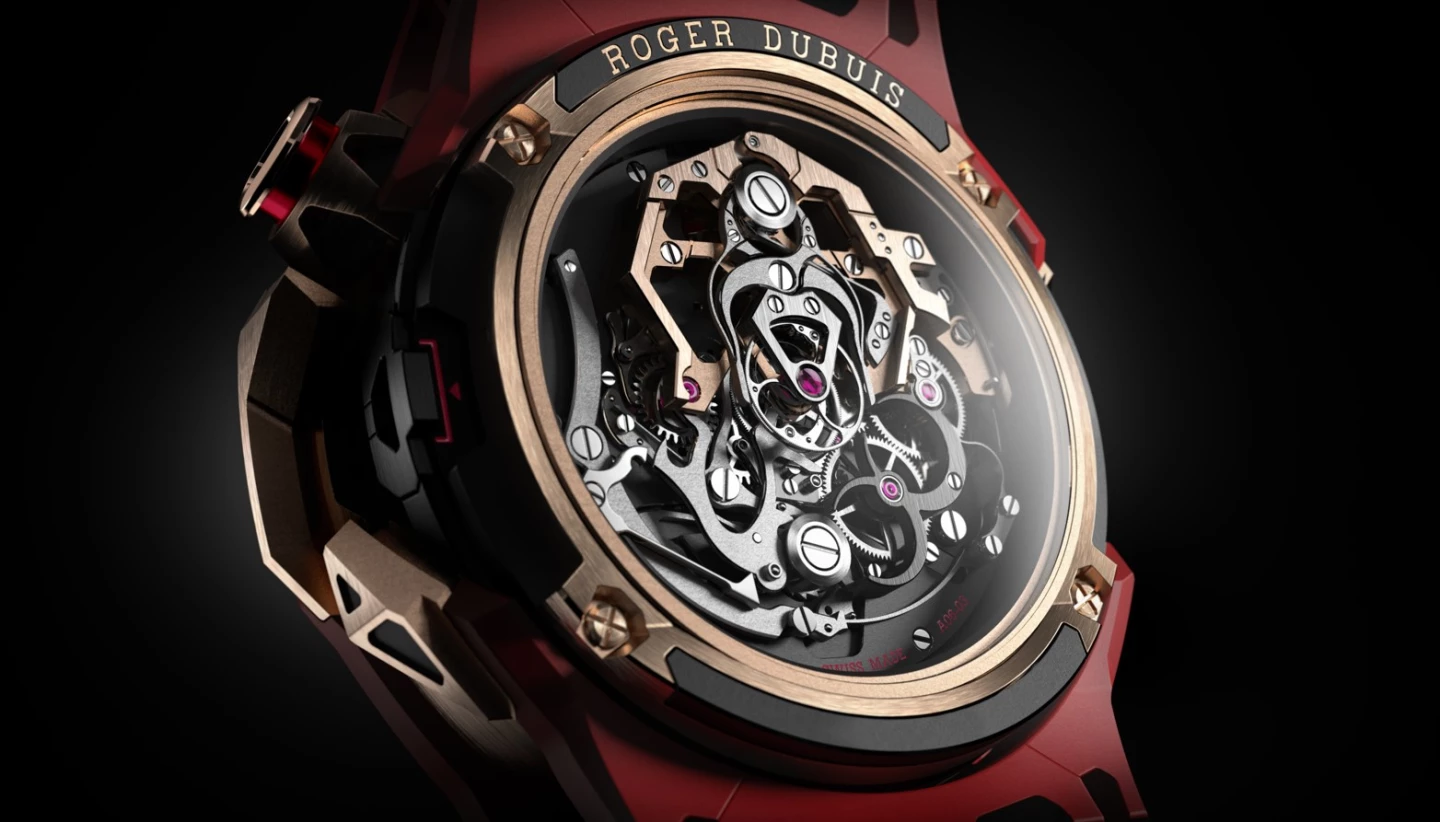
Gravity also plays a part in the Monovortex's skeletonized automatic RD114 Calibre. Instead of a rotating counterweight to automatically wind the watch, it has the Turborotor Cylindrical Oscillating Weight sitting vertically at the 12 o'clock position. As the watch is moved, this micro rotor weight spins and gravity pulls it down in an oscillating motion, generating power more efficiently and more ergonomically.
But the real showpiece of the Monovortex is its split chronograph complication that allows it to time events both in full and in laps with the press of a button. It's a common feature, but the Monovortex uses a unique way to display the elapsed time.
In addition to the seconds hand, the minutes are counted off at the 3 o'clock position by the numbers 0, 3, 6, and 9 set in an isotoxal pattern with markers in between the numerals for 1,2,4,5,7, and 8. These signify the individual minutes. Next to these is a three-pointed hand with the numerals 0,1, 2, and 3 for 10 minutes. When one of these rotating points aligns with the fixed markers, it gives the elapsed minutes. For example, the point marked 1 aligning with the fixed number 6 means 16 minutes.
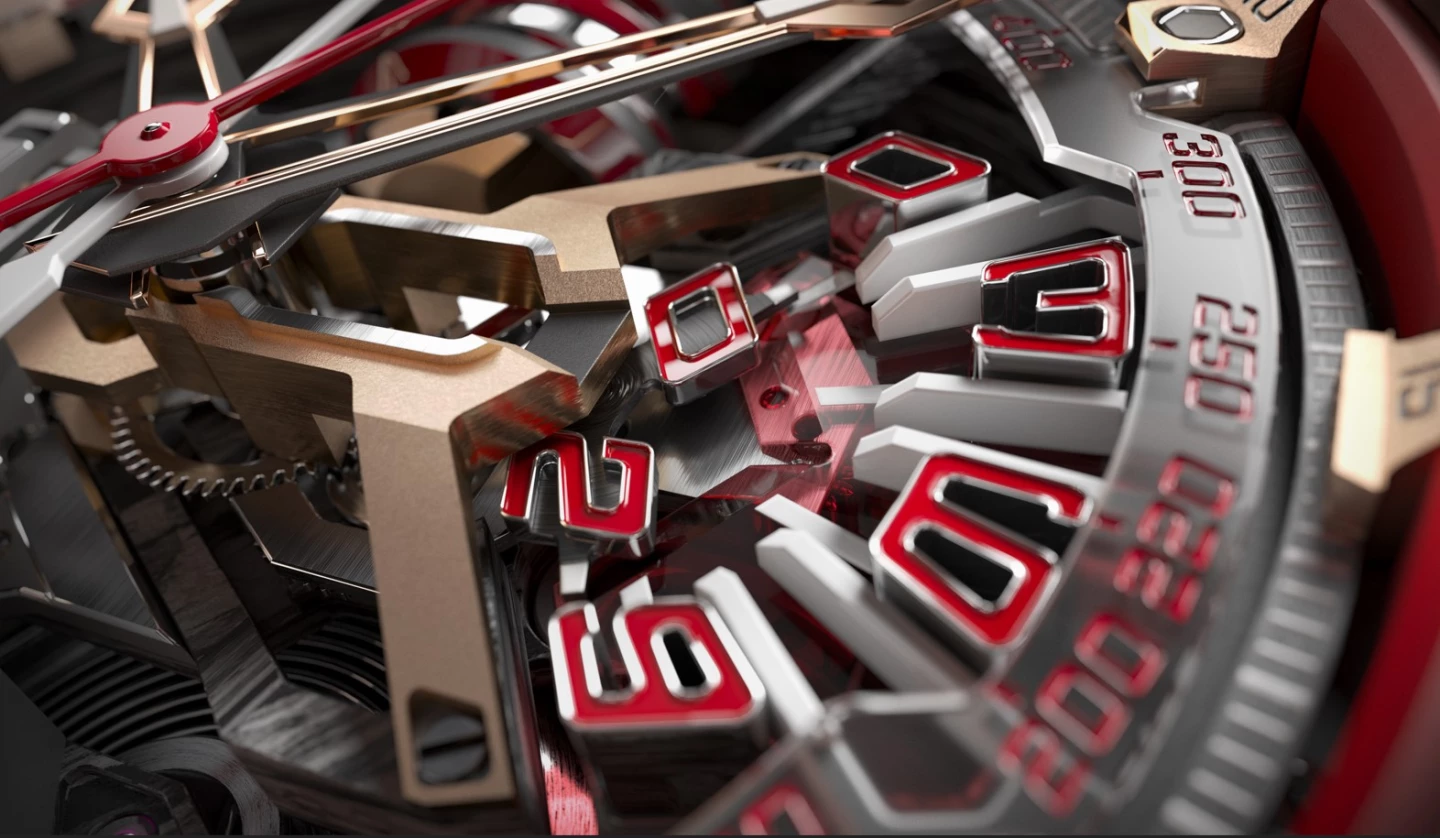
It's a bit hard to grasp in words, but in a video the movement is easy to understand.
In addition to these complications, the Monovortex also has a tachometer and a power reserve meter that displays using optical fibers that change hue as the watch winds down.
Being a concept piece, the Monovortex is not for sale, though its innovations may find their way into future retail watches.
Source: Roger Dubuis
